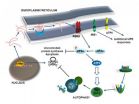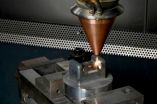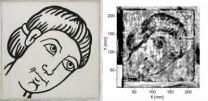Daily steps add up for midlife women's health
2012-11-21
(Press-News.org) CLEVELAND, Ohio (November 21, 2012)—Moving 6,000 or more steps a day—no matter how—adds up to a healthier life for midlife women. That level of physical activity decreases the risk of diabetes and metabolic syndrome (a diabetes precursor and a risk for cardiovascular disease), showed a study published online this month in Menopause, the journal of the North American Menopause Society.
Although other studies have shown the value of structured exercise in lowering health risks such as diabetes, high blood pressure, and heart disease, this study has shown that habitual physical activity—whether it comes from exercising or just activities of daily living—has the power to improve women's health.
In Passo Fundo, Brazil, 292 women who were 45 to 72 years old wore pedometers and recorded their daily steps. They also had health checks such as cholesterol and blood sugar and waist and hip measurement (to gauge abdominal obesity, which is a risk for diabetes and cardiovascular disease). Women who took 6,000 or more steps per day were considered active and those who took fewer inactive.
The active women were much less likely than the inactive ones to be obese and have metabolic syndrome or frank diabetes, whether or not they had gone through menopause–when these risks usually go up–and whether or not they were using hormone therapy.
For midlife women, it looks like the journey to health begins with 6,000 steps!
INFORMATION:
The study, "Association between habitual physical activity and lower cardiovascular risk in premenopausal, perimenopausal, and postmenopausal women: a population-based study," by Veronica Colpani, PT, Karen Oppermann, MD, PhD, and Poli Mara Spritzer, MD, PhD, was supported by a grant from Conselho Nacional de Desenvolvimento Cientifico e Technólogico and will be published in the May issue of Menopause.
Founded in 1989, The North American Menopause Society (NAMS) is North America's leading nonprofit organization dedicated to promoting the health and quality of life of all women during midlife and beyond through an understanding of menopause and healthy aging. Its multidisciplinary membership of 2,000 leaders in the field—including clinical and basic science experts from medicine, nursing, sociology, psychology, nutrition, anthropology, epidemiology, pharmacy, and education—makes NAMS uniquely qualified to serve as the definitive resource for health professionals and the public for accurate, unbiased information about menopause and healthy aging. To learn more about NAMS, visit our website: www.menopause.org
ELSE PRESS RELEASES FROM THIS DATE:
2012-11-21
Infants seem to develop at an astoundingly rapid pace, learning new things and acquiring new skills every day. And research suggests that the abilities that infants demonstrate early on can shape the development of skills later in life, in childhood and beyond.
Read about the latest research on infant development published in the November 2012 issue of Psychological Science, a journal of the Association for Psychological Science.
How Do You Learn to Walk? Thousands of Steps and Dozens of Falls per Day
How do babies learn to walk? In this study, psychological scientist ...
2012-11-21
Short snippets of DNA found in human brain tissue provide new insight into human cognitive function and risk for developing certain neurological diseases, according to researchers from the Departments of Psychiatry and Neuroscience at Mount Sinai School of Medicine. The findings are published in the November 20th issue of PLoS Biology.
There are nearly 40 million positions in the human genome with DNA sequences that are different than those in non-human primates, making the task of learning which are important and which are inconsequential a challenge for scientists. ...
2012-11-21
Chromosomes - long, linear DNA molecules – are capped at their ends with special DNA structures called telomeres and an assortment of proteins, which together act as a protective sheath. Telomeres are maintained through the interactions between an enzyme, telomerase, and several accessory proteins. Researchers at The Wistar Institute have defined the structure of one of these critical proteins in yeast.
Understanding how telomeres keep chromosomes – and by extension, genomes – intact is an area of intense scientific focus in the fields of both aging and cancer. In aging, ...
2012-11-21
PHILADELPHIA – A pathway called the "Unfolded Protein Response," or UPR, a cell's way of responding to unfolded and misfolded proteins, helps tumor cells escape programmed cell death during the development of lymphoma.
Research, led by Lori Hart, Ph.D., research associate and Constantinos Koumenis, Ph.D., associate professor,and research division director in the Department of Radiation Oncology, both from the Perelman School of Medicine, University of Pennsylvania, and Davide Ruggero, Ph.D., associate professor, Department of Urology, University of California, San Francisco, ...
2012-11-21
The environment has a more formidable opponent than carbon dioxide. Another greenhouse gas, nitrous oxide, is 300 times more potent and also destroys the ozone layer each time it is released into the atmosphere through agricultural practices, sewage treatment and fossil fuel combustion.
Luckily, nature has a larger army than previously thought combating this greenhouse gas—according to a study by Frank Loeffler, University of Tennessee, Knoxville–Oak Ridge National Laboratory Governor's Chair for Microbiology, and his colleagues.
The findings are published in the ...
2012-11-21
U.S. Department of Agriculture (USDA) scientists are helping peach growers make the most of dwindling water supplies in California's San Joaquin Valley.
Agricultural Research Service (ARS) scientist James E. Ayars at the San Joaquin Valley Agricultural Sciences Center in Parlier, Calif., has found a way to reduce the amount of water given post-harvest to early-season peaches so that the reduction has a minimal effect on yield and fruit quality. ARS is USDA's principal intramural scientific research agency, and the research supports the USDA priority of promoting international ...
2012-11-21
Forging dies must withstand a lot. They must be hard so that their surface does not get too worn out and is able to last through great changes in temperature and handle the impactful blows of the forge. However, the harder a material is, the more brittle it becomes - and forging dies are less able to handle the stress from the impact. For this reason, the manufacturers had to find a compromise between hardness and strength. One of the possibilities is to surround a semi-hard, strong material with a hard layer. The problem is that the layer rests on the softer material and ...
2012-11-21
The age-adjusted prevalence of chronic obstructive pulmonary disease (COPD) varies considerably within the United States, from less than 4 percent of the population in Washington and Minnesota to more than 9 percent in Alabama and Kentucky. These state-level rates are among the COPD data available for the first time as part of the newly released 2011 Behavioral Risk Factor Surveillance System (BRFSS) survey.
"COPD is a tremendous public health burden and a leading cause of death. It is a health condition that needs to be urgently addressed, particularly on a local level," ...
2012-11-21
It was a special moment for Michael Panzner of the Fraunhofer Institute for Material and Beam Technology IWS in Dresden, Germany and his partners: in the Dresden Hygiene Museum the scientists were examining a wall picture by Gerhard Richter that had been believed lost long ago. Shortly before leaving the German Democratic Republic the artist had left it behind as a journeyman's project. Then, in the 1960s, it was unceremoniously painted over. However, instead of being interested in the picture, Panzer was far more interested in the new detector which was being used for ...
2012-11-21
HOUSTON – (Nov. 22, 2012) – Using a new technique called cryo-electron tomography, two research teams at Baylor College of Medicine (www.bcm.edu) have created a three-dimensional map that gives a better understanding of how the architecture of the rod sensory cilium (part of one type of photoreceptor in the eye) is changed by genetic mutation and how that affects its ability to transport proteins as part of the light-sensing process.
Almost all mammalian cells have cilia. Some are motile and some are not. They play a central role in cellular operations, and when they ...
LAST 30 PRESS RELEASES:
[Press-News.org] Daily steps add up for midlife women's health


